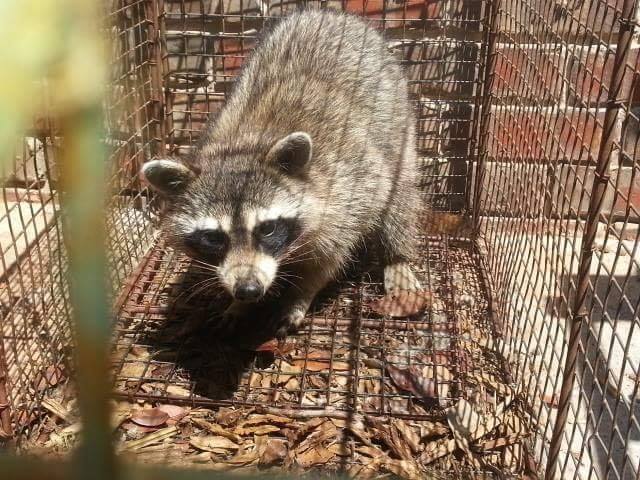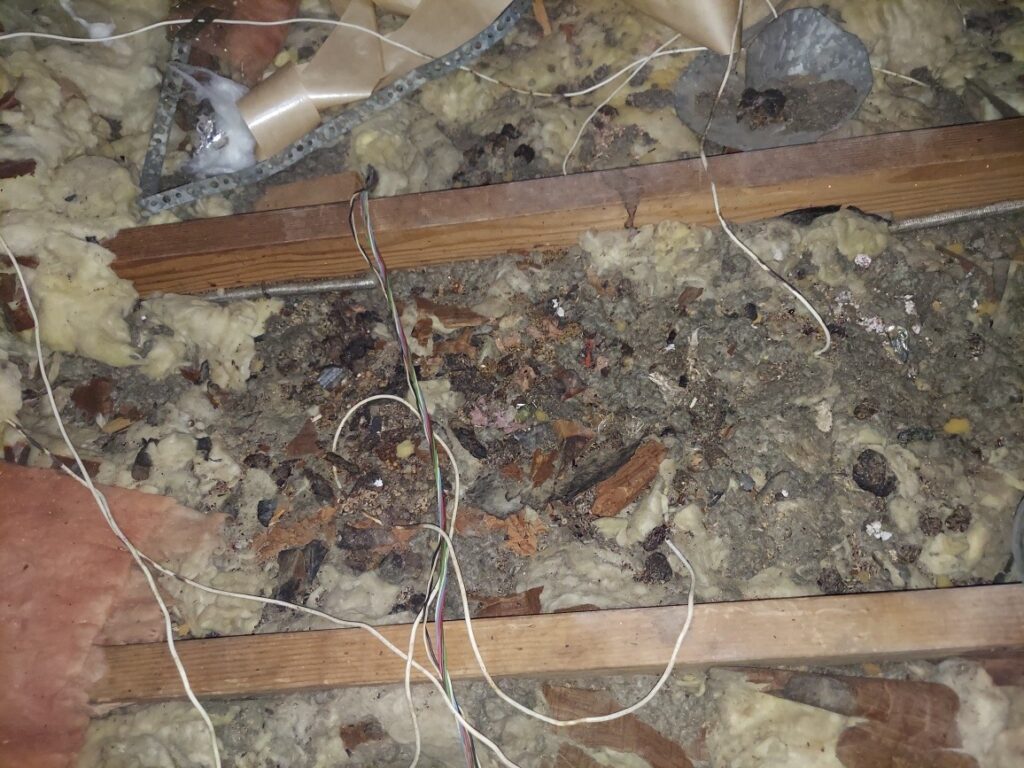Pest Control Services: Raccoon Removal From Attics During The Birthing Season

Raccoons In Attics During The Birthing Season
During the birthing season, raccoons tend to seek out warm and safe places to nest, and your attic may be the perfect spot for them. The raccoon birthing season lasts from March to June, and during this time, raccoons may aggressively protect their young if they feel threatened. Signs of raccoon infestation in attics should be assessed by a trained wildlife control operator that can conduct a thorough inspection. which can include a ground level inspection, roof inspection, thermal inspection, and an attic inspection. The WCO may ask if you are hearing rustling or scratching sounds, or if you have seen visible damage to insulation or wiring, and strong odors.
It is best to hire a professional wildlife control and removal service to handle the removal of raccoons from your property safely. They will have the expertise and equipment necessary to remove raccoons and to make sure they don’t return. Additionally, measures such as prevention and exclusion can help deter raccoons from entering your property in the first place. With proper management, you can peacefully coexist with raccoons without putting your family or property at risk.
Risks associated with having raccoons in your attic

Having raccoons in your attic has several health risks. Raccoons can carry diseases that can be transmitted to humans and pets. Their droppings in the attic can also contain parasites and bacteria that can spread diseases if not handled properly. In addition to health risks, raccoons can cause structural damage to your home or business by tearing up insulation and chewing on wires. Raccoons are also known to be loud, especially during the birthing season which lasts from February to June. It is crucial to take necessary steps to remove raccoons from your attic as soon as possible to prevent any harm to your health, property, and well-being.
What to do after the raccoons are removed
If you have successfully removed raccoons from your attic during the birthing season, it is important to take a few extra steps to ensure that your home is clean and protected from future infestations. First, clean out any raccoon waste then clean and disinfect your attic. If you don’t want to do this, we are fully equipped to handle raccoon waste clean up. This can help prevent the spread of diseases and unpleasant odors. Next, seal all entry points to your home to prevent future raccoon infestations. Any damage caused by the raccoons in the attic should also be repaired. We are a full service wildlife control company so we can take care of you from the animal removal all the way to the clean up and repair, even the insulation removal and replacement.
Finally, consider installing raccoon proof soffit vents, chimney caps, ridge vent protection, gable vent protection, and pay close attention to soffit returns to prevent raccoons from accessing the attic space and chimney. We are certified installers of many wildlife prevention products that can help keep raccoons from re-entering your home and causing further damage. To schedule an appointment for an inspection please give our office a call at 405-464-2121 By taking these steps, you can ensure that your home remains safe and secure from future raccoon infestations.
Tips for prevention of future raccoon infestations.
Prevention is key when it comes to wildlife control, particularly with raccoons. To prevent raccoon infestations in your attic, it’s essential to seal all openings around the house to prevent their entry. Install motion-activated lights to deter raccoons from nesting on your property. Also, remove potential food sources such as pet food or garbage bins that may attract raccoons to your home. One potential solution for safely removing raccoons from your attic is a one-way door system, which allows the raccoons to exit but not return. This device is not recommended during the birthing season because raccoons are know for damaging roofs and soffits trying to get back into the attic space to get their kits. Taking these preventive measures can help ensure that you can maintain a raccoon-free home.
Frequently Asked Questions
When is the birthing season for raccoons?
The birthing season for raccoons typically occurs between March and June. During this time, female raccoons will give birth to litters of two to five kits or sometimes called cubs. It’s important to remember that raccoons can carry diseases and should never be approached or handled without proper training and precautions. If you encounter raccoons in your area, it’s best to contact a wildlife removal specialist for assistance.
Why do raccoons choose to nest in attics?
Raccoons may choose to nest in attics because they provide a safe and warm environment that is well-protected from predators. Often times the raccoons will use the home to help regulate the body temperature of the kits so they do not have to stay with them. Additionally, attics often contain materials like insulation that can be used for nesting material. To prevent raccoons from nesting in your attic, it is important to seal any openings or gaps and remove any potential food sources like dog food, cat food, bird seed, or even trash.
What are the risks of leaving raccoons in my attic during the birthing season?
Leaving raccoons in your attic during the birthing season can pose several risks. Raccoons can cause significant damage to your property, such as chewing wires, insulation, and ductwork. Additionally, raccoons can carry diseases that can be transmitted to humans, including rabies and roundworm. The presence of raccoons and their offspring can also create noise and odor issues. It is important to contact a professional wildlife removal service to safely and humanely remove raccoons from your property.
What are the most effective methods for safely removing raccoons from my attic?
Removing raccoons from your attic can be a tricky process, but there are some effective methods that can be done safely. It is important to note that attempting to remove raccoons yourself can be dangerous, and it is recommended that you contact a professional wildlife removal service.
Some safe and effective methods for raccoon removal include using one-way doors or traps to capture and release them elsewhere. Please note it is not a good idea to use one-way doors during the birthing season. It is also recommended to secure any entry points to prevent further raccoon infestations.
Parasites that raccoons carry that are transferrable to pets and humans.
Raccoons carry parasites like fleas and ticks and roundworms. The CDC has posted a link with information that is helpful.
Conclusion
In conclusion, raccoons may seem cute and cuddly, but they can cause significant damage to your home and health. During the birthing season, it is crucial to handle raccoon removals from attics with care and expertise to ensure the babies and mother’s safety. Once the raccoons are removed, it is essential to sanitize and repair any damages they may have caused to prevent future infestations. Tips such as trimming trees and securing garbage cans can be effective in deterring raccoons from your property. Be sure to subscribe to our newsletter to stay up-to-date on the latest wildlife control and prevention techniques.
